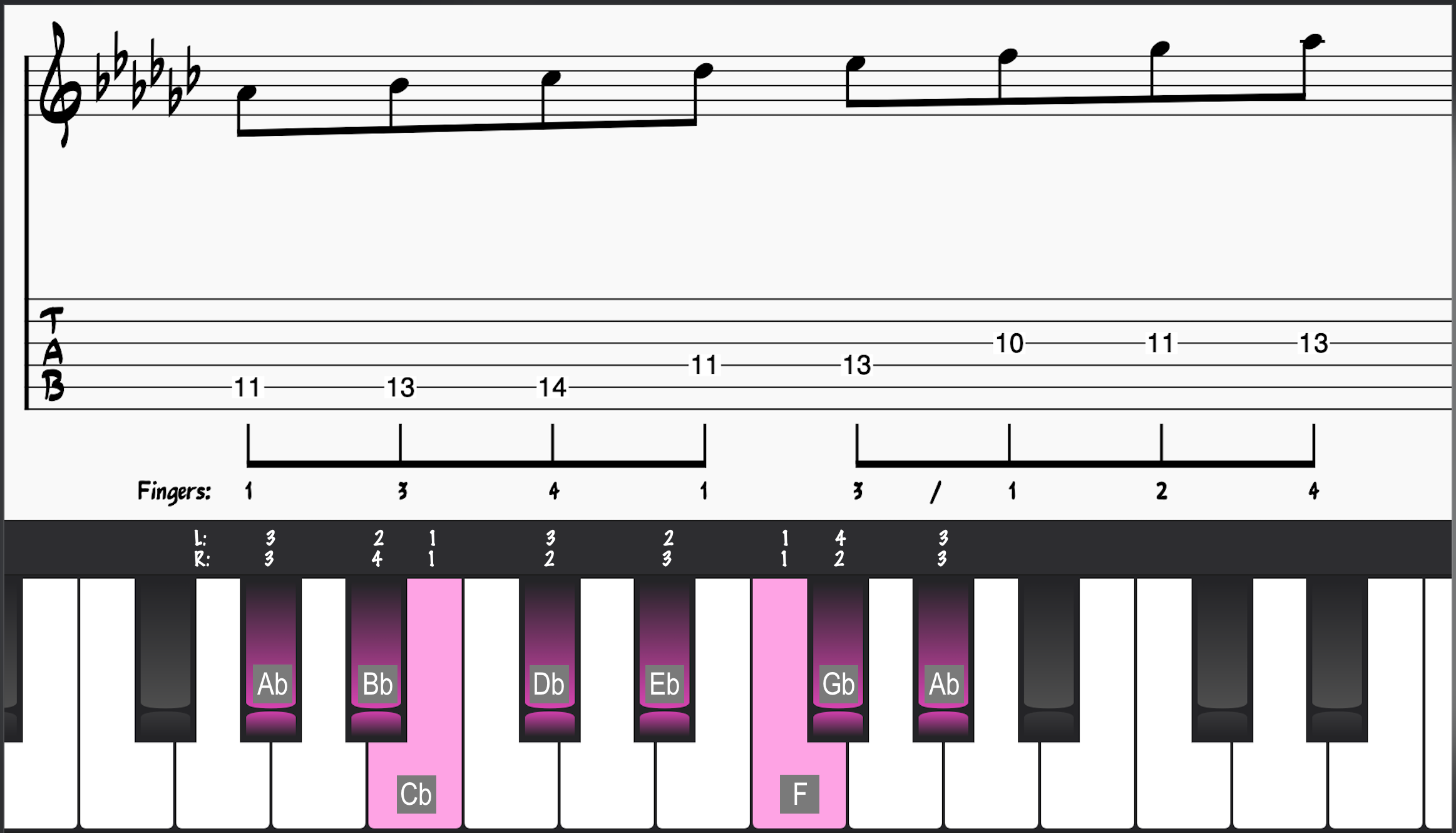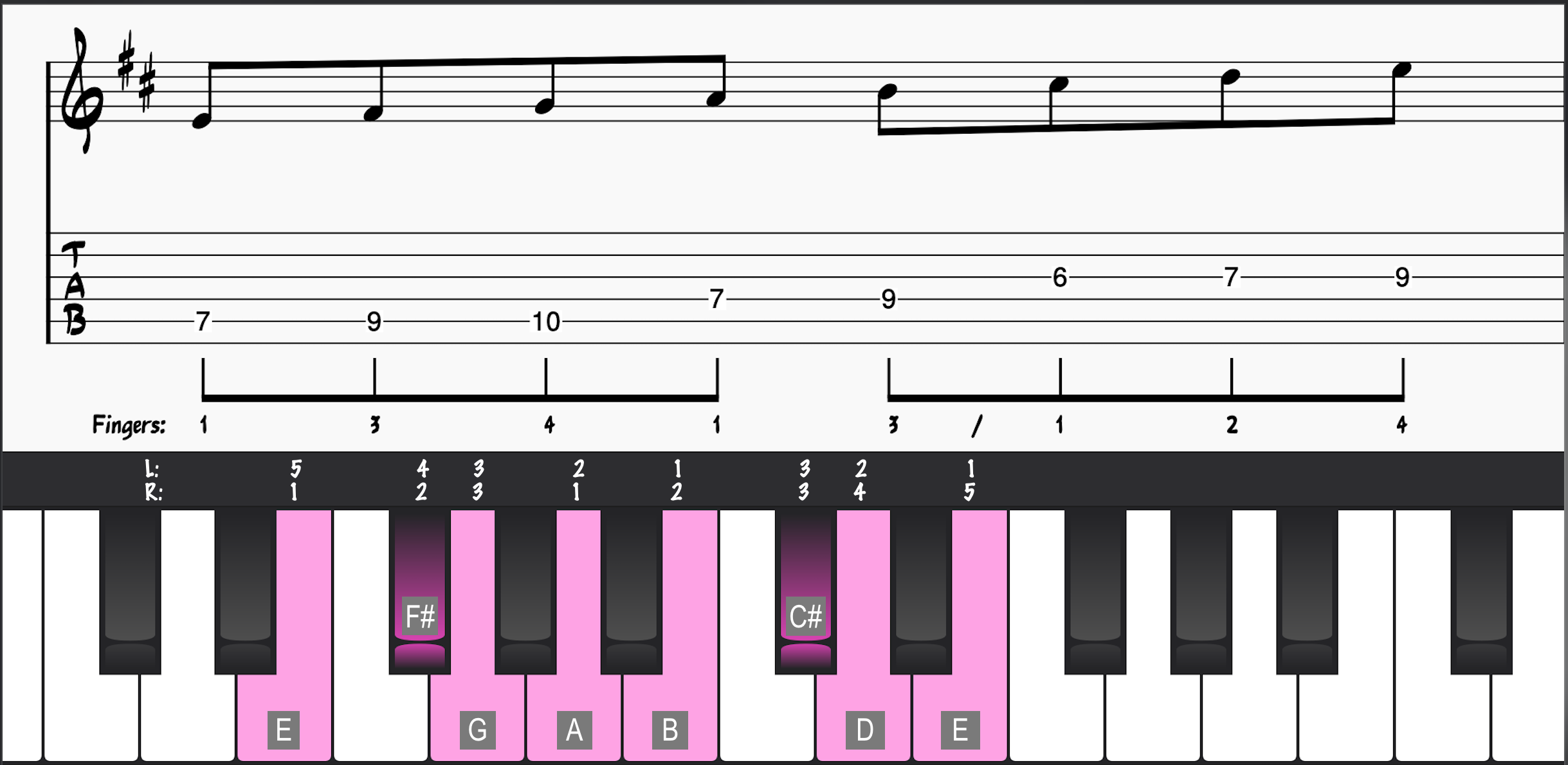The Dorian scale is one of the most used scales in music. Genres like jazz and rock music utilize the Dorian sound because it has unique characteristics—it is a minor mode and contains a minor third. However, it is brighter than the standard minor scale because it contains a major sixth interval.
If you want to improve at improvisation and boost your music theory chops by learning about the Dorian mode, then this article is for you!
We’ll help you unlock all the secrets behind the Dorian sound by exploring:
- What the Dorian scale is, how to build it, and why it’s different from other minor scales
- Music theory behind Dorian mode (and all the modes)
- The Dorian mode in all twelve keys on Guitar and Piano
- How to use the Dorian mode and other musical modes in jazz improvisation.
If you are serious about improving your musicianship skills and want to advance your playing and scale knowledge, you should check out the Learn Jazz Standards Inner Circle.
The Inner Circle helps musicians focus on what matters in the practice room. By cutting out unproductive noodling and focusing on the aspects of playing and musicianship that help you grow, you can streamline your practice routine and make measurable progress toward your music goals.
Practice smarter. Not Harder. Join the Inner Circle.
Table of Contents
What is the Dorian Scale?
Simply put, the Dorian scale is a minor scale with a major sixth interval instead of a minor sixth interval. This major sixth interval gives the Dorian mode its unique sound and sets it apart from other modes and scales.
First, let’s explore the different intervals that make up the Dorian scale.

We’ll use D Dorian as an example. Here are the different intervals within Dorian mode measured from the root note:
- D to E = Major Second
- D to F = Minor Third
- D to G = Perfect Fourth
- D to A = Perfect Fifth
- D to B = Major Sixth
- D to C = Minor Seventh
- D to D = Octave
Dorian Scale Formula
The formula for the Dorian scale is W-H-W-W-W-H-W:

We now know the scale formula and its intervals, but where does the Dorian scale come from? The answer is that it’s a mode of the major scale.
The Dorian Mode is the 2nd Mode of the Major Scale.
Take a look at the scale formula one more time:
- W-H-W-W-W-H-W
Let’s bring that last whole step to the beginning of the sequence:
- W-W-H-W-W-W-H
You may recognize that formula as the major scale formula. The Dorian scale is derived from the major scale. If you take the C major scale sequence and start on D, you end up with a D Dorian scale:
- C-D-E-D-G-A-B-C-D-E-F-G-A-B-C-D-E-F-G-A-B-C
- C-D-E-D-G-A-B-C-D-E-F-G-A-B-C-D-E-F-G-A-B-C
Each mode is derived from a different scale degree of the major scale. Here are the seven diatonic scales (seven modes) you can derive from the major scale:
I. C = C Ionian mode (C major)
- C-D-E-F-G-A-B-C
- W-W-H-W-W-W-H
ii. D = D Dorian mode
- D-E-F-G-A-B-C-D
- W-H-W-W-W-H-W
iii. E = E Phrygian mode
- E-F-G-A-B-C-D-E
- H-W-W-W-H-W-W
IV. F = F Lydian Mode
- F-G-A-B-C-D-E-F
- W-W-W-H-W-W-H
Check out our article on the Lydian mode for more information.
V. G = G Mixolydian mode
- G-A-B-C-D-E-F-G
- W-W-H-W-W-H-W
Check out our article on the Mixolydian mode for more information.
vi. A = A Aeolian mode (natural minor scale)
- A-B-C-D-E-F-G-A
- W-H-W-W-H-W-W
viiø. B = B Locrian mode
- B-C-D-E-F-G-A-B
- H-W-W-H-W-W-W
The Dorian Scales Compared to Other Minor Scales
Another way to memorize the characteristics of the Dorian scale is to compare it to other minor scales and minor modes to understand what makes it different from those other modes and scales.
Dorian Mode vs. Minor Pentatonic Scale

I like to think of pentatonic scales as “skeleton” scales. Unlike the Dorian scale, the pentatonic scale has no half steps. It consists of a root note, a minor third, a perfect fourth, a perfect fifth, and a minor seventh. Pentatonic scales only have a five-note sequence instead of seven.

All of these notes are present in the Dorian scale, too. However, the Dorian scale also has a major second interval and a major sixth interval. Both scales have a minor quality, but Dorian and the other minor scales we’ll look at contain more information.
Dorian Mode vs Aeolian Mode (Natural Minor Scale)
We briefly mentioned the natural minor scale earlier. Compared to Dorian, the natural minor scale has one different note: a minor sixth interval instead of a major sixth interval.
If we play a natural minor scale from D (D Aeolian), the scale would be spelled:
- D-E-f-G-A-Bb-C-D

The natural minor scale is based on the 6th scale degree of the major scale. Therefore, D Aeolian would have the same key signature as F major (one flat: Bb). This is the only difference between the Dorian and natural minor scales.
Dorian Mode vs. Phrygian Mode
Let’s compare the scale to one more minor scale: the Phrygian mode. The Phrygian minor scale has a minor sixth interval and a minor second degree. A D Phrygian scale would be spelled:
- D-Eb-F-G-A-Bb-C-D

The D Phrygian is a third mode of Bb major, so this scale has two flats: Bb and Eb.
BEFORE YOU CONTINUE...
If music theory has always seemed confusing to you and you wish someone would make it feel simple, our free guide will help you unlock jazz theory secrets.

The Dorian Minor Scale in All 12 Keys on Piano and Guitar
Now that we understand the Dorian scale and know why it is a distinct minor scale let’s learn it in all 12 keys on guitar and piano! Guitar tabs and piano fingerings are provided in the images below!
D Dorian Scale (C Major Scale)
- D-E-F-G-A-B-C-D

G Dorian Scale (F Major Scale)
- G-A-Bb-C-D-E-F-G

C Dorian Scale (Bb Major Scale)
- C-D-Eb-F-G-A-Bb-C

F Dorian Scale (Eb Major Scale)
- Eb-F-G-Ab-Bb-C-D-Eb

Bb Dorian Scale (Ab Major Scale)
- Bb-C-Db-Eb-F-G-Ab-Bb

Eb Dorian Scale (Db Major Scale)
- Eb-F-Gb-Ab-Bb-C-Db-Eb

Ab Dorian Scale (Gb Major Scale)
- Ab-Bb-Cb-Db-Eb-F-Gb-Ab

C# Dorian Scale (B Major Scale)
- C#-D#-E-F#-G#-A#-B-C#

F# Dorian Scale (E Major Scale)
- F#-G#-A-B#-C#-D#-E-F#

B Dorian Scale (A Major Scale)
- B-C#-D-E-F#-G#-A-B

E Dorian Scale (D Major Scale)
- E-F#-G-A-B-C#-D-E

A Dorian Scale (G Major Scale)
- A-B-C-D-E-F#-G-A

How To Use The Dorian Scale in Improvisation
Now that we know the Dorian mode (and corresponding major scales) in all 12 keys, let’s explore how to use it! We’ll examine two ways jazz musicians use the Dorian sound when improvising.
Using the Dorian Scale in a ii-V-I Chord Progression
The Dorian mode is one of the seven diatonic modes, which means we can use it to improvise solos and melodies over diatonic chord progressions. The ii-V-I chord progression is a great example of a diatonic chord progression that appears throughout jazz songs.
The Roman numerals in a ii-V-I chord progression refer to diatonic chords related to the I or tonic. The ii is the diatonic chord based on the second scale degree. The V is the diatonic chord based on the fifth scale degree, and the I is the tonic chord.
You can tell whether a chord is major or minor depending on the case of the Roman numeral. Lowercase Roman numerals (ii, iii, vi, vii) are used for minor triads and other minor chords. These minor chords also imply minor modes.
Uppercase Roman numerals (I, IV, V) are used for major triads and other major chords. When you see uppercase Roman numerals, they imply major modes and scales.
In the Key of C, here are all seven diatonic chords and their related musical modes:
- I chord: C major (Cmaj7), C Ionian
- ii chord: D minor (D-7), D Dorian
- iii chord: E minor (E-7), E Phrygian
- IV chord: F major (Fmaj7), F Lydian
- V chord: G major (G7), G Mixolydian
- vi chord: A minor (A-7), A Aeolian
- viiø chord: B diminished (B-7b5), B Locrian
Therefore, a ii-V-I chord progression in C looks like this:
|| D-7 | G7 | Cmaj7 | ||
- For the ii chord, we can use the D Dorian mode.
- For the V chord, we can use the G Mixolydian mode.
- For the I chord, we can use the C Ionian mode (C major scale).
Note that all the notes in these three scales are made of the same notes—they come from the same parent scale, so they use all the same notes.

Any time you see a ii chord in a progression, you can use one of the twelve Dorian modes to play over the changes. You simply need to figure out the parent key.
Using Dorian Modally
Some jazz music is written to remain in one static tonality for measures at a time. Jazz tunes like Impressions or So What stay in a D Dorian (C major) tonality and only briefly change.
Specifically, in Impressions, one of the most popular Dorian mode songs, the harmony moves up one-half step to Eb Dorian (Db major) in the B section.
However, the tonality is still Dorian, despite changing keys briefly.

Master Jazz Scales Like the Dorian Scale and Join the Learn Jazz Standards Inner Circle
Ready to take your playing to the next level?
An Inner Circle membership grants you access to over ten years of jazz and music education resources. You’ll have access to instrument-specific courses, masterclasses, workshops, and a vibrant community of musicians who are passionate about becoming the best musicians they can be.
Come see what we have to offer! Join the Inner Circle.









